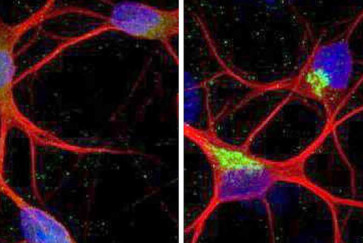College football players may appear healthy and successful on the field, but a number of biological measures say otherwise.
A new study between Northwestern Medicine, Pennsylvania State University and other collaborating universities has found collegiate football athletes with a decade or more of experience with the sport have related abnormalities in inflammation, energy production and coordination that are apparent before the football season and across the season. The abnormalities are related to routine repetitive head impacts from tackling and blocking.
Assessing repeated head impacts
Most head trauma studies tend to focus on injury being severe enough to cause a clinical concussion, as opposed to assessing the routine effect of repeated tackles or blows to the head over a season. These findings argue that impact sport athletes, regardless of history of concussion, have chronic problems.
These problems were found in measures that show abnormal regulation of inflammation, less coordinated movement and abnormalities in how cells produce energy. These three measures are significantly related to each other before the football season and to changes observed across the football season. They were also related to the number of head impacts a player received over the season.
“These findings support over a decade of reports about the negative effects of repetitive head impacts along with studies of animal brain injury,” said co-senior author Dr. Hans Breiter, professor of psychiatry and behavioral sciences at Northwestern University Feinberg School of Medicine. “At this point, it appears the canary is dead in the coal mine.”
“This problem affects much of youth and professional impact sports in the U.S., along with training of U.S. military personnel,” said co-senior author Dr. Semyon Slobounov, professor of neurosurgery at Penn State College of Medicine.
Measuring throughout a season
This study used measures previously found to be increased in football players before the season began and at a level similar to what is observed in individuals coming to emergency rooms with a concussion. These measures have been associated with inflammation regulation and were increased over the course of the football season. In this study, these regulatory measures of inflammation were linked with measures of energy production and coordination.
The football players’ coordination — measured as accuracy maintaining balance, speed at correcting balance and ability to remember movements — related to measures indicative of energy production issues and inflammation regulation. Football athletes are successful, in part, due to their abilities to recover from collisions, quickly change direction or foot placement and remember how to carry out various types of plays on the field. Before and across the season, the higher the regulatory measures of inflammation were, the lower the coordination measures were.
The study also showed abnormalities in energy production, resulting in decreased energy. These abnormalities linked abnormal inflammation regulation with reduced coordination. They also showed relationships with measured head impacts.
“A lack of energy can have significant consequences, especially in regard to brain function, raising questions of the long-term consequences” said co-lead author Sumra Bari, a postdoctoral fellow at the department of psychiatry and behavioral sciences at Northwestern. She and colleagues suspect that damage to energy producing components of cells – mitochondria – are from the repetitive head impacts that these players sustain each season. In the brain, mitochondria number in the millions for each neuron (where neurons are the cells that some say resemble computers) and are fundamental for producing the energy needed for brain neurons to function.
Developing preventative interventions
To perform this study, 23 athletes from a collegiate football team were enrolled who had been playing football for an average of 11 years. The athletes participated in a full season of competitive collegiate play. Nine of them had experienced one to two concussions in prior seasons. Blood was collected and coordination was tested both before and after the football season. The coordination tests were designed to assess balance and to test their ability to remember a virtual pathway — collectively referred to as “coordination.” In addition, head impacts were recorded at all practices across the season using sensors which were attached to the players’ helmets.
Future research should expand to a larger cohort of athletes to confirm the findings, scientists said.
“Ultimately, the goal is to develop preventative interventions that minimize abnormal changes in the brain that have been observed in studies of contact sport athletes time and time again,” said lead author Nicole Vike, a postdoctoral fellow at the department of psychiatry and behavioral sciences at Northwestern. “Collectively, we need to use interdisciplinary approaches, like those used here, to better quantify the unseen damage of contact sports.”
A good portion of research on head impacts and brain injuries to football athletes has utilized imaging techniques like magnetic resonance imaging to uncover changes in brain structure and function. But that is a costly diagnostic tool. It is critical to better understand how changes in simple blood measures can quantify brain abnormalities, the scientists said. In their research, they developed a statistical method to better understand relationships between blood measures, coordination and head impacts. This method can be extended for use in other interdisciplinary human and animal studies.

